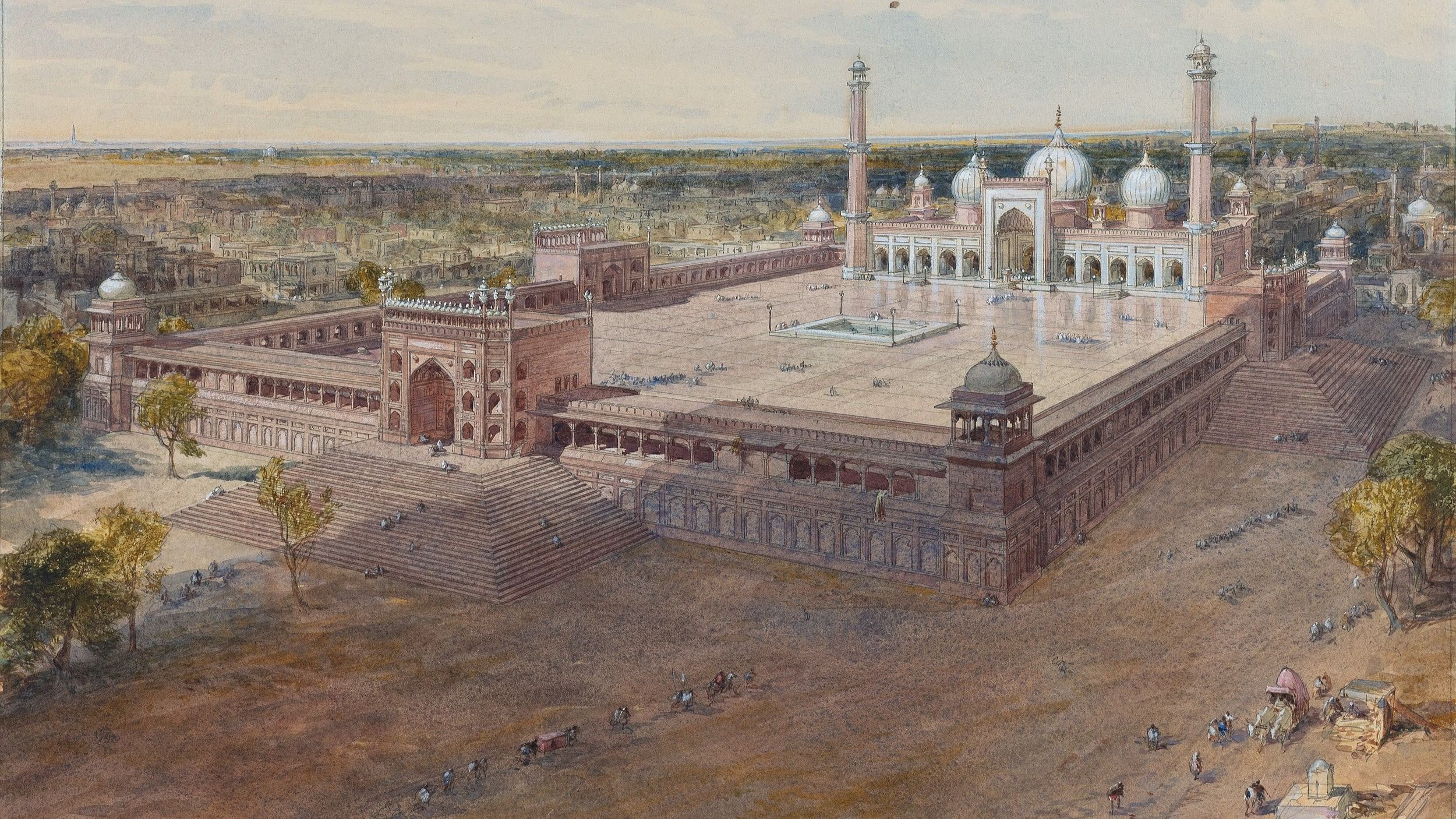
Credit: By Special Arrangement
Salman Rushdie wrote a heartfelt description of one of the most famous monuments in the world for the National Geographic Traveller magazine in 1999, the last sentence of which reads: ‘And the Taj Mahal is, beyond the power of words to say it, a lovely thing, perhaps the loveliest of things.’
This is a world-renowned man gushing about the beauty of the Taj Mahal in an age where there is, perhaps, hardly anybody who has not heard of this 17th-century monument to love or at the least seen its image. One can only imagine the wonder then of the earliest Europeans in India when they first laid their eyes upon the monument in Agra by the river Yamuna.
The very first professional British landscape painter to visit the Taj, William Hodges, wrote on February 25, 1783: ‘When this building is viewed from the opposite side of the river, it possesses a degree of beauty… the whole appears like a most perfect pearl on an azure ground. The effect is such as, I confess, I never experienced from any work of art.’
The Taj Mahal, undoubtedly, remained one of the two most popular destinations in India — as it still is — for all foreign painters in the decades to follow, but the subcontinent was immeasurably more than that. The artists — from Britain as well as from mainland Europe —travelled all over the land, first along the popular routes, and later, off the beaten paths, to create a picture of India Exotica for eager audiences back home. (At the same time, it must be added that paintings of India made during the British rule began not just as an exercise in pleasure but also as works commissioned by the colonial rulers to aid the Empire in understanding the colony to rule and exploit it better).
New Delhi’s DAG, which has been at the forefront of hosting exhibitions showcasing works of art created during different periods of the British Raj, recently launched another show in the category, titled ‘Destination India: Foreign Artists in India, 1857-1947.’ And given the response of the art-loving public to the show, one can safely conjecture that India of centuries gone by is as much ‘exotica’ for Indians today as it was for Western connoisseurs of ages past.
Giles Tillotson, who has curated the show, says the period (1857-1947) is marked by distinct changes in the way paintings of India were being made by foreign artists compared to earlier decades. He shares: “The artists of the earlier period, late 18th-mid-19th century, saw their work as contributing to bringing Indian civilisation, its history and culture, to the West. But the artists who came to India in this later period (1857-1947, covered by the present exhibition) engaged with it in ways quite different from their predecessors. They did not see themselves as part of Europe’s scholarly study of India’s past — even though it continued — but they offered a more personal view of Indian life, often at street level. They were now showing what they made of the view of India they had seen.”
So, even if there are seven different renditions of the Taj in the exhibition — by Charles William Bartlett, Hugo Vilfred Pedersen, Erich Kips, Willem Otto Jan Nieuwenkamp and Hiroshi Yoshida — these are personalised, going beyond the architecture, and imbued with the ‘air’ and ‘sentiment’ of the time.
Varanasi is the other Indian destination that has remained popular with foreign tourists since time immemorial, right up till now. There are a dozen examples of the holy city in the exhibition, by William Carpenter, Ludwig Hans Fischer, Alexander Scott, Richard Robert Drabble, Marius Bauer, Adrien-Jean le Mayeur de Merprès, Ernest Stephen Lumsden, Kips, Pedersen and Yoshida. Benaras paintings too reveal a change over the previous period, which Tillotson talks about at length in his essay in the accompanying publication.
Unlike earlier paintings, the paintings of this period focus on the atmosphere of Benaras, featuring a sadhu or the huddle of pilgrims on the ghats, a nearby temple, its characteristic umbrellas, or festivities by the river. It is this artistic vision, of showcasing not the obvious but what in terms of videography is now known as ‘city shots’, that makes this exhibition come alive. There are works showing small vendors in bazaars, as in those by Carlton Alfred Smith or Mortimer Menpes; bedecked ox-drawn carts by Marius Bauer and Edwin Lord Weeks; common village folk at Sanchi, Udaipur, Ellora, Lahore, Madurai, Delhi; and even some portraits, ranging from royals to commoners.
The most animated and standout act, however, is Dancing Girl by Edwin Lord Weeks (1849-1903), one of the earliest American artists to visit India, who also wrote and illustrated a travelogue, From the Black Sea Through Persia and India (1896). In The Dancing Girl, he places a nautch girl in the courtyard of the dargah of saint Nizamuddin Auliya, with the onlookers seated formally in a baithak setting. “He is creating what he wants to believe in, presented in a combination with naturalism. Both Weeks and Bauer are assuming an ignorant audience, which also helps us understand an artist’s audience,” shares Tillotson.
A rich, comprehensive exhibition, it features paintings and etchings by about 40 artists hailing from Germany, France, the Netherlands, Denmark, the USA and Japan, besides Britain.
The exhibition runs till August 17 at DAG, New Delhi.